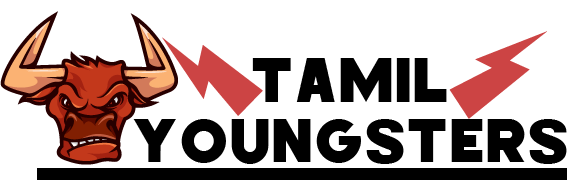12th Biology Study Material Chapter9(Strategies for enhancement in food production) - Tamilyoungsters.
Chapter-9 strategies for enhancement in food production
Animal Breeding-objectives:
1.Improved growth rate.
2.Increased production
3. Improve Desirable Qualities.
4.Improved resistance to diseases
5.Improved resistance to adverse environmental conditions
Methods:
i).Inbreeding:-Breeding between same breed for 4-6 generations.Eg.- cows, baffaloes, poultry In breeding depression- continued in breeding reduces fertility even productivity. A single outcross often helps to overcome inbreeding depression
ii) Outbreeding- breeding between unrelated animals Of two types –
1.) Out crossing- mating within the same breed but not having ancestors.
2.) Crossbreeding- superior males of one breed are mated with superior females of another breed to get better progency.e.g.- cows of inferior breed with superior bull. Hisardale- is a new breed of sheep developed in Punjab by crossing Bikaneri Eves and Marano Rams.
3) Interspecific hybridization- male and female animals of two different species are mated. E.g.- mule is crossbreed of male donkey and female horse.
4) Control breeding- it is done by artificial insemination and multiple ovulation embryo transfer technology (MOET)
(a) Artificial insemination- semen of superior male is collected and injected unto the reproductive tract of selected female. The spread of certain diseases can be controlled by this method.
(b) MOET- This is a technique for herd improvement. Hormones(FSH) are given to the cow for inducing follicular maturation and super ovulation. The cow is either mated with best bull or inseminated .It is done in cattle, sheep, rabbits etc.
Steps in Plant breeding:-
1 Collection of variability-Collection and preservation of all different wild varieties, species, relatives of cultivated species etc. are also called germplasm collection.
2.Evaluation and selection of parents-Germplasm is evaluated to identify plants with desirable traits.
3.Cross hybridization among the selected parents-Two plants having two desired characters are hybridized to get new hybrid having two desired characters.
4.Selection and testing of superior recombinants-Selection of the plants having desired character combinations.
5.Testing,release and commercialization of new cultivars-Newly selected lines are evaluated for their yield, agronomic traits, disease resistance etc. and released into the market.
Green revolution - Crop production. White revolution - Milk production Blue revolution - Fish production Biofortification-Breeding crops with higher levels of proteins, vitamins and minerals e.g.vit C rich bitter gourd,mustard,tomato; protein rich beans lablab etc.
SCP (Single cell protein )-Microbes such as bacteria, yeast, algae are treated in various ways and used as food. Eg-spirulina can be grown in waste water(from potato processing plant) Tissue culture- cultured with any plant part called explant.
Types –
1.Meristem Culture –When apical part is taken and cultured.
Uses:
a)Rapid clonal multiplication
b)Production of virus free plants
c)Production of transgenic plants
d)Germplasm collection
2. Protoplast culture and somatic hybridization- The plant cell lacking cell wall is protoplast. Fusion of protoplast is done by Polyethylene glycol. Pomato is somatic hybrid of potato and tomato.
3.Micropropagation-Tissue culture technique used for rapid vegetative propagation of ornamental plants and fruit trees
4.Somaclone-Plants obtained from single plants by vegetative propagation.
Questions I MARK
Q1.Name two techniques involved in controlled breeding experiments.
Q2.What is blue and green revolution?
Q3. What is inbreeding depression?
Q4. What is ‗Heterosis‗or hybrid vigour?
Q5.Name the Indian variety of rice patented by an American company.
Q6.What is Pomato?
Q7 .Name the algae used as protein rich food.
Q8.Expand-MOET and SCP.
Q9.What is quarantine?
Q10.What is cultivar?
2 MARK
Q1. What is Biofortification?
Q2.Which part of the plant is best suited for making virus free plants?
Q3.What is breed? What are the objectives of animal breeding?
Q4.Define out-crossing? Suggest an advantage.
Q5.What is artificial insemination?what is its importance?
Q6. What are the differences between aqua and pisciculture?
Q7. What is animal husbandry?
Q8. What is bird flu?
Q9. Name the most common species of honey bees of India?what are the products from the honey bees?
Q10. What is germplasm?How it is maintained?
3MARKS QUESTIONS
Q1.What does inbreeding mean? Suggest its advantages. What is the danger of inbreeding?
Q2.Name the methods employed in animal breeding. Which method is the best? Why?
Q3. Explain the procedure of MOET technique in cattle.
Q4. What is interspecific hybridization ?Give one example of crop in which it practiced and mention one advantage.
Q5. What is cross-breeding ?what advantages does it have? Give example
5 MARKS QUESTIONS
Q1. Explain the points that have to be considered for successful bee- keeping?
Q2. Write the scientific name of sugarcane grown in north and south India respectively. Mention their characteristic features. Mention the characteristic of the hybrid produced by crossing these two varieties .
Hint :North – Saccharumbarberi. South – Saccharumofficinarum . High yield , thick stems , higher sugar content , ability to grow in both North and South India Q 3. Describe various steps involved in plant breeding.
Hint: Collection of variability, Evaluation and selection of parents, Cross hybridisation among the selected parents, Selection of testing of superior Recombinants, Testing , release and comercialisation of new cultivars.

